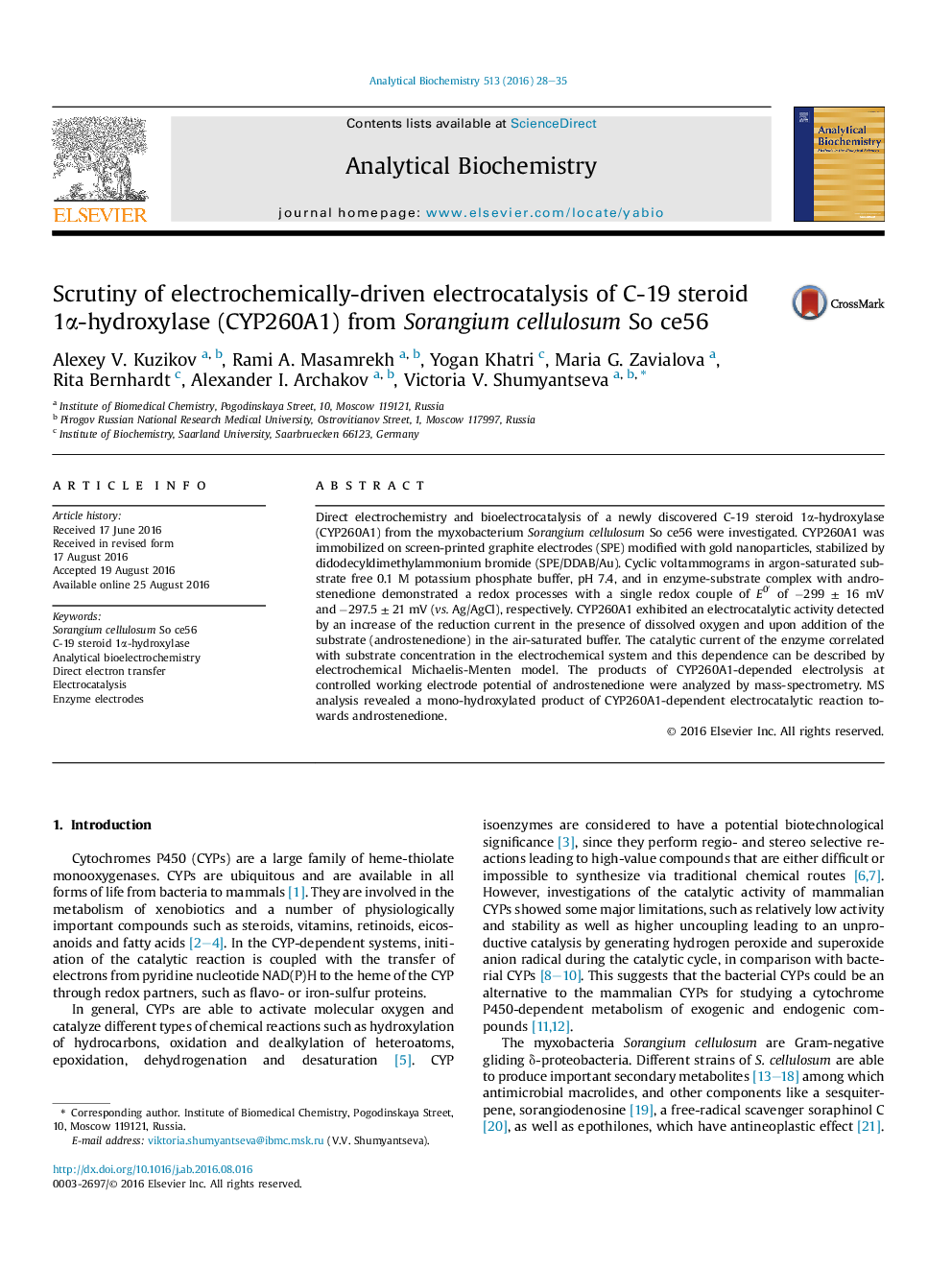| Article ID | Journal | Published Year | Pages | File Type |
|---|---|---|---|---|
| 7557276 | Analytical Biochemistry | 2016 | 8 Pages |
Abstract
Direct electrochemistry and bioelectrocatalysis of a newly discovered C-19 steroid 1α-hydroxylase (CYP260A1) from the myxobacterium Sorangium cellulosum So ce56 were investigated. CYP260A1 was immobilized on screen-printed graphite electrodes (SPE) modified with gold nanoparticles, stabilized by didodecyldimethylammonium bromide (SPE/DDAB/Au). Cyclic voltammograms in argon-saturated substrate free 0.1 M potassium phosphate buffer, pH 7.4, and in enzyme-substrate complex with androstenedione demonstrated a redox processes with a single redox couple of E0â² of â299 ± 16 mV and â297.5 ± 21 mV (vs. Ag/AgCl), respectively. CYP260A1 exhibited an electrocatalytic activity detected by an increase of the reduction current in the presence of dissolved oxygen and upon addition of the substrate (androstenedione) in the air-saturated buffer. The catalytic current of the enzyme correlated with substrate concentration in the electrochemical system and this dependence can be described by electrochemical Michaelis-Menten model. The products of CYP260A1-depended electrolysis at controlled working electrode potential of androstenedione were analyzed by mass-spectrometry. MS analysis revealed a mono-hydroxylated product of CYP260A1-dependent electrocatalytic reaction towards androstenedione.
Related Topics
Physical Sciences and Engineering
Chemistry
Analytical Chemistry
Authors
Alexey V. Kuzikov, Rami A. Masamrekh, Yogan Khatri, Maria G. Zavialova, Rita Bernhardt, Alexander I. Archakov, Victoria V. Shumyantseva,
